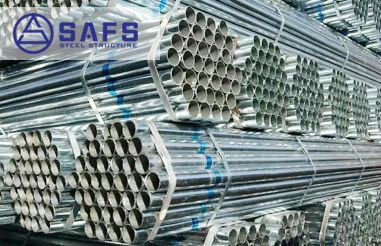Dapeng Town Industrial Park, Tongshan District, Xuzhou City, Jiangsu Province, China
Adhesion, also known as plating adhesion, refers to the bonding strength between the plating and the substrate. In order to ensure that the plating will not come off during subsequent processing and use, the adhesion of the plating should be tested using an appropriate test method. The choice of test method can be decided by the supplier. Common tests usually include bending test, scratch test or impact test, which are internally controlled by the steel mill to ensure that the plating is able to withstand certain external forces without peeling off. Plating weight Plating weight is the weight of the plating per unit area, and it is an important indicator of the thickness of the plating. The choice of plating weight depends on the intended application and environmental conditions. Nominal Plating Weight Range : The range of nominal plating weights available should be in accordance with the relevant standards (depending on the production capacity of the steel mill). If required, other coating weights can be provided by agreement between the supplier and the buyer. Recommended Nominal Coating Weights: The recommended nominal coating weights and the corresponding coating designations should be in accordance with the relevant standards. For example, hot-dip galvanized coating Z 250 can also be expressed as Z 125/125, which means that the weight of both sides of the coating is 125g/m2. Test of coating weight: For equal thickness coating, the average of the three-point test of the coating weight shall be not less than the specified nominal coating weight; the single-point test value shall be not less than 85% of the specified nominal coating weight. For hot plating products with single-sided plating and poor thickness plating, they are extremely rare in actual trade and will not be analyzed in detail.

The purpose of these general requirements is to ensure that the coating is uniform and of sufficient thickness to meet the intended corrosion resistance and service life requirements. The quality of hot-dip galvanized coatings can be guaranteed through rigorous testing and standardized coating weights for optimum corrosion protection in a variety of applications.